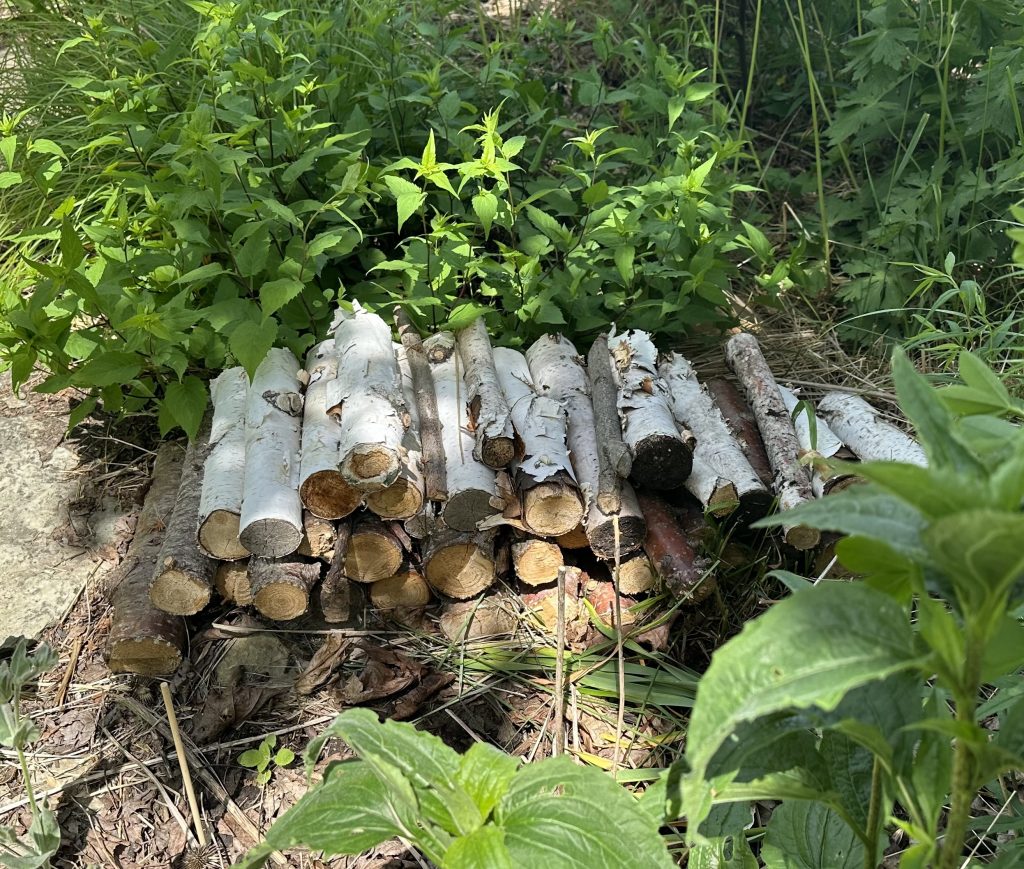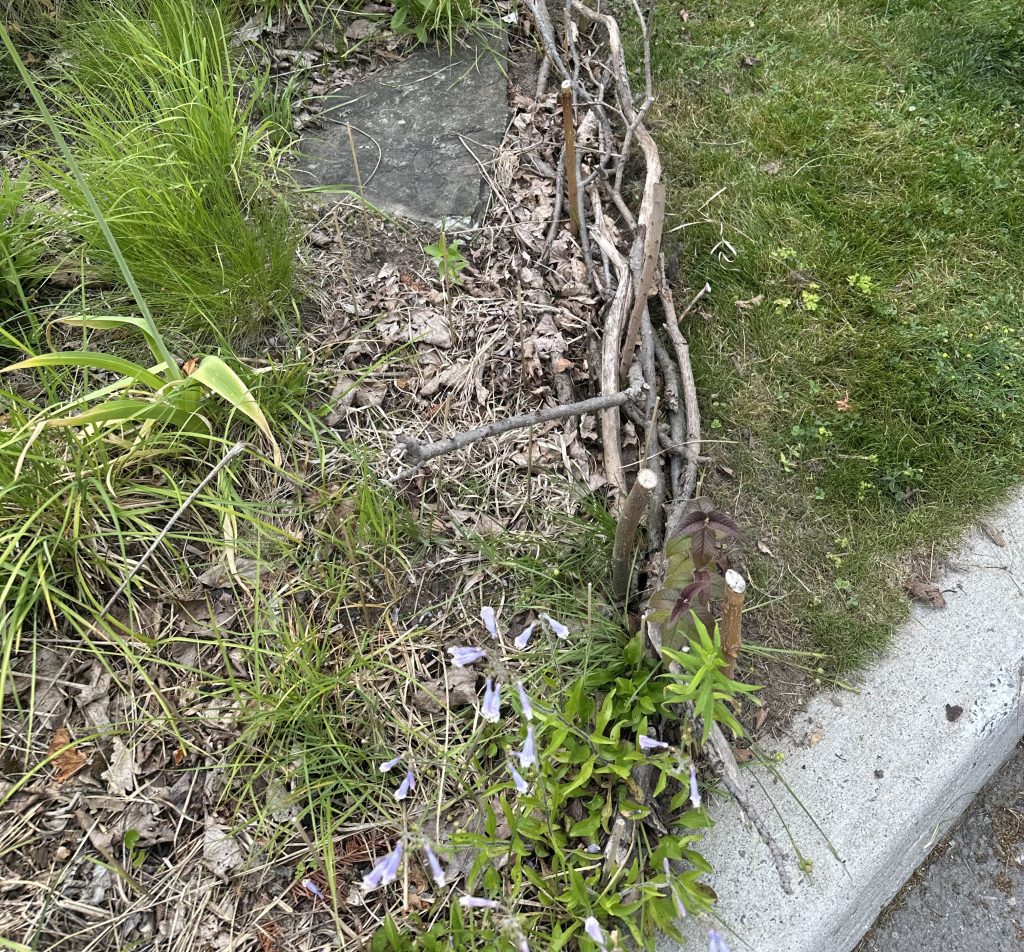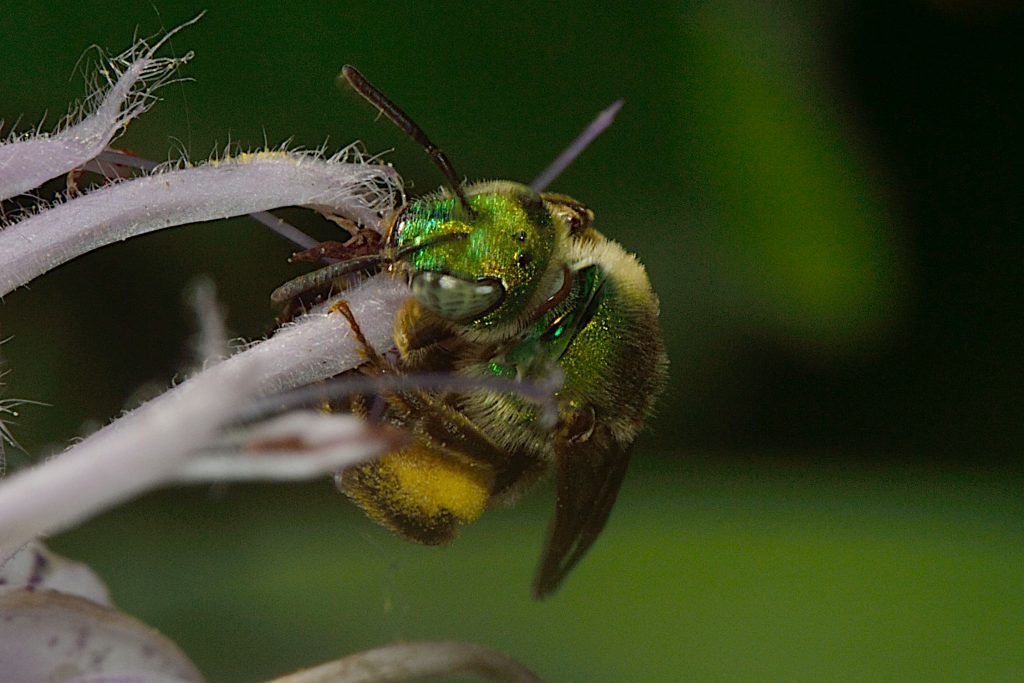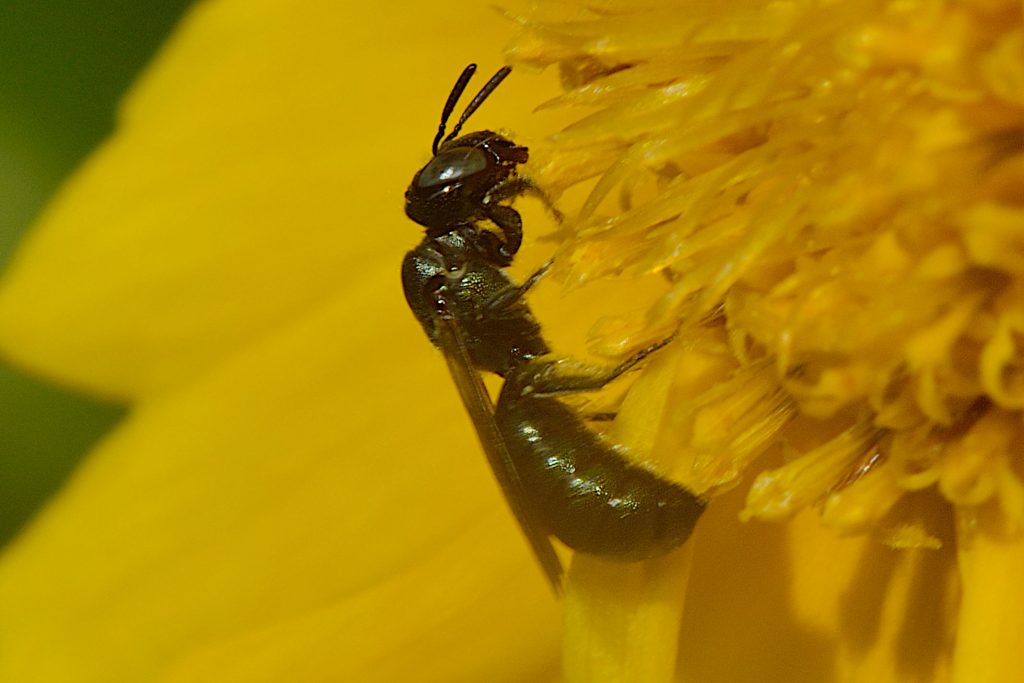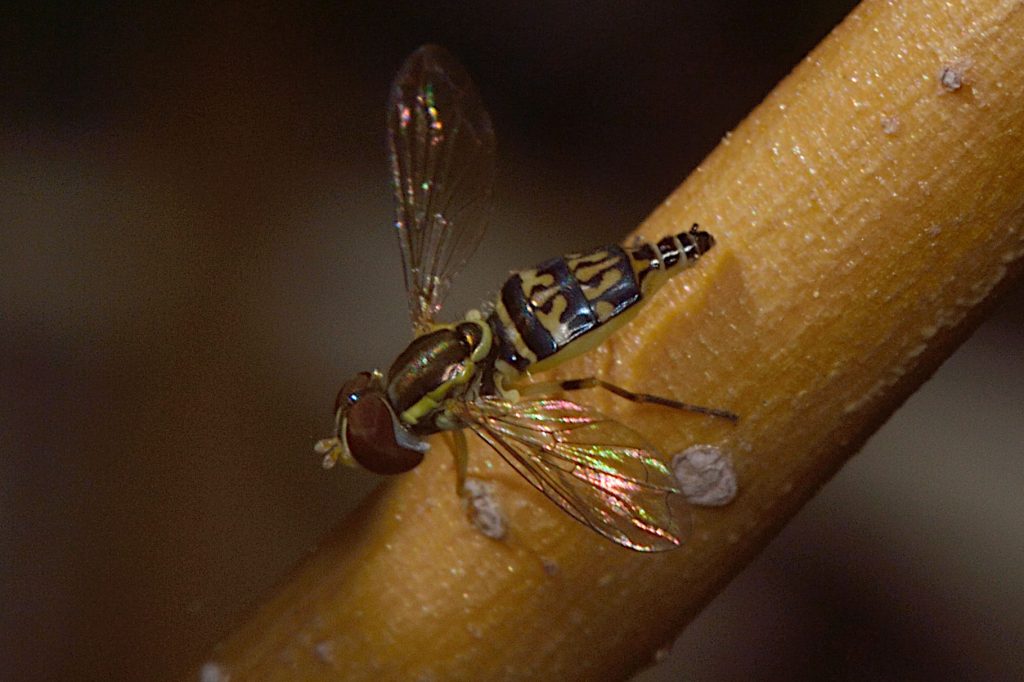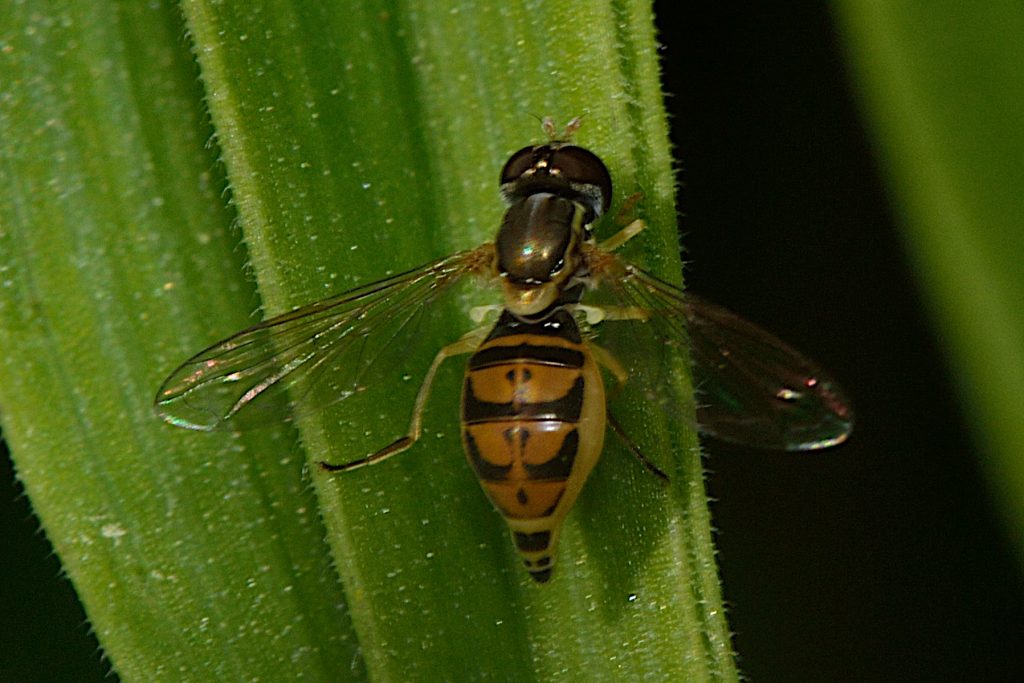by Berit Erickson
On 21 June, Christine Edmonds opened her meadow-inspired boulevard garden for a Wild Pollinator Partners tour. Entomologist and bee researcher, Gil Miranda, also joined us as a special guest.
A mixed garden
While Christine used to be an ornamental gardener, she began learning about native plants 15 years ago when her daughter became interested in birds. Since then, Christine has been gradually adding more native plants to her yard. The garden is now primarily native plants, but still includes some out-of-range natives, and non-natives.
Part of Christine’s garden, near a fire hydrant, is dominated by native grasses like Prairie Dropseed and Sideoats Grama, creating the perfect habitat for active, nesting Song Sparrows. Nearby, sun-loving native Foxglove Beardtongue and Golden Alexanders mixed with prairie plants like Blue False Indigo and Bradbury’s Monarda, as well as non-native Salvia and purple Alliums. The walkway to her main entry is lined with dramatic drifts of Lance-leaf Coreopsis, Ohio Spiderwort, and ornamental geraniums. In the shade, Bowman’s Root takes centre stage. A mature Black Elderberry and Pagoda Dogwood are focal points, as well as bird feeders.
Ecological garden design
Christine has a long-term interest in garden design. Now she applies her skills while planting more native plants densely and diversely. Christine researched various styles of naturalistic garden design through online courses with prairie author and designer, Kelly D. Norris, as well as the writings of Nigel Dunnett, Thomas Rainer (Planting in a Post Wild World), and others. She is now guided by Kelly D Norris’ planting proportions: ground layers 25%, seasonal interest 50%, and structure 25%.
Christine proves that you can support insect and wildlife biodiversity without sacrificing esthetics. In 2024, she received a pollinator garden design award from the Ottawa Horticultural Society.
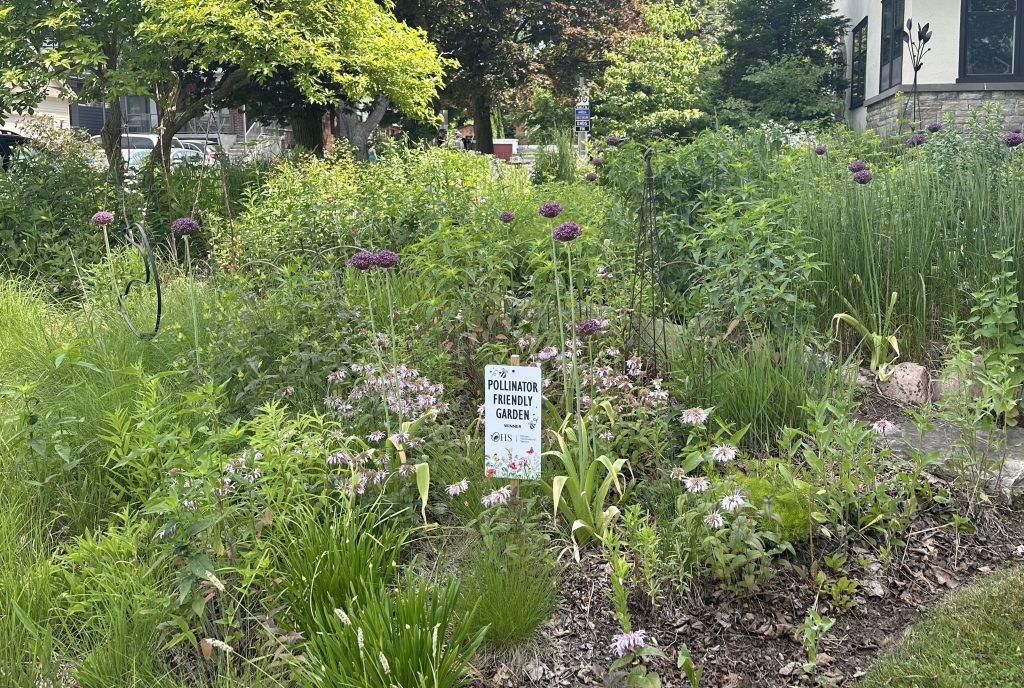
Native grasses, early-blooming Bradbury’s Monarda, and non-native alliums.
Here are a few of Christine’s native plant garden design tips:
- Plant in groups of single species to create eye-catching patches.
- Repeat patches of a single species.
- Repeat flower colour. Christine particularly likes to repeat groups of white flowers, such as Bowman’s Root, Foxglove Beardtongue, Pearly Everlasting, Thimbleweed, Flat-topped Aster, and Wild Quinine (prairie native).
- Choose an imaginary line to link repeated groups of a single species or flower colour to draw your eye through the garden.
- Edit to prevent species from dominating. You want plant diversity in order to support insect diversity.
- Plant densely with plants about 12 inches apart (measured from the centre of the plants).
To read more about Christine’s garden, see our blog post Christine Edmonds’ boulevard garden.
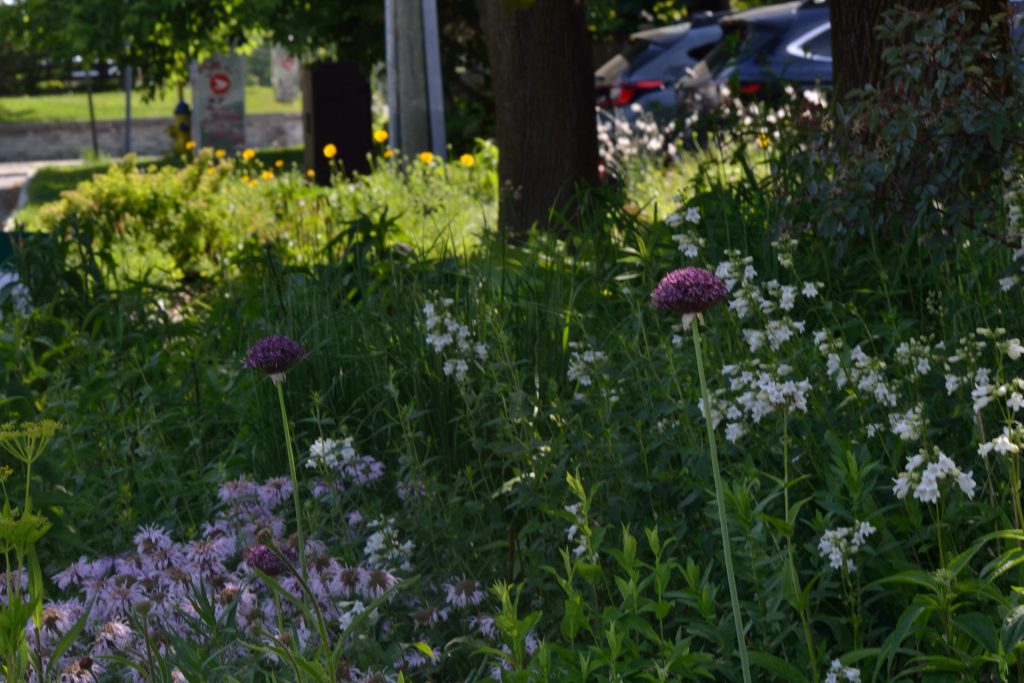
Christine’s garden in full bloom: prairie plant, Bradbury’s Monarda (left), white Foxglove Beardtongue (right), and ornamental allium.
Bees in the garden with Gil
Christine learned how to create pollinator habitat through the Pollinator Partnership Canada online course. Gil Miranda was impressed with the number of pollinators in the garden. He noted that there were many different flower shapes and colours for different species of bees, as well as stems, logs, and bare ground for bee nesting.
Below are some of the pollinator species Gil photographed in the garden.
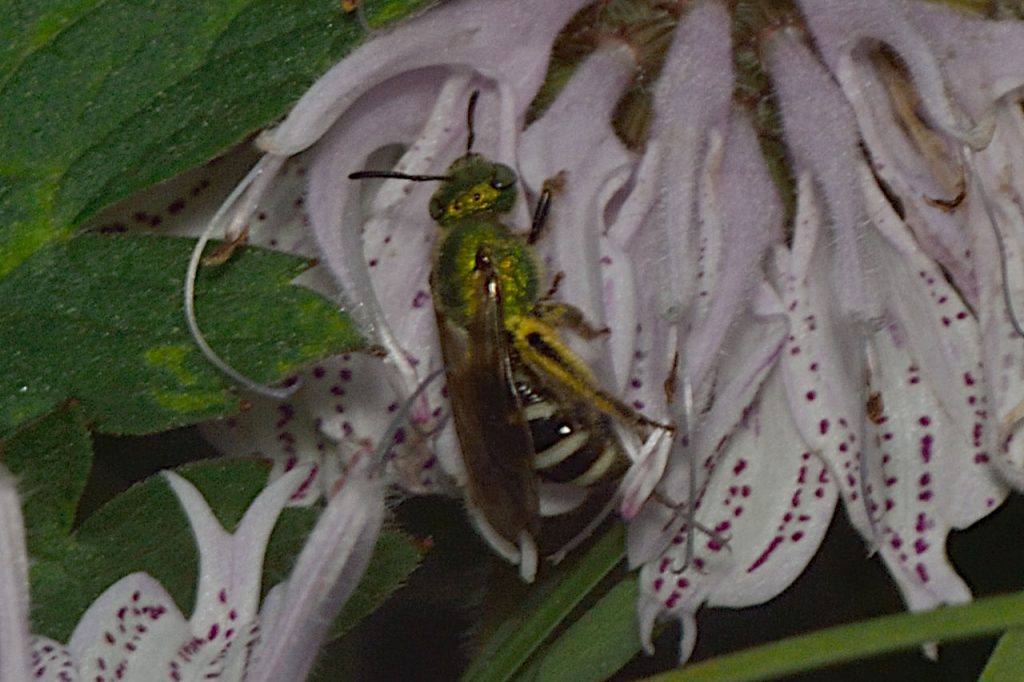
Agapostemon (striped sweat bee) – as the common name implies, these are metallic green bees that will often have striped abdomens (only female A. sericeus have a completely metallic green abdomen).
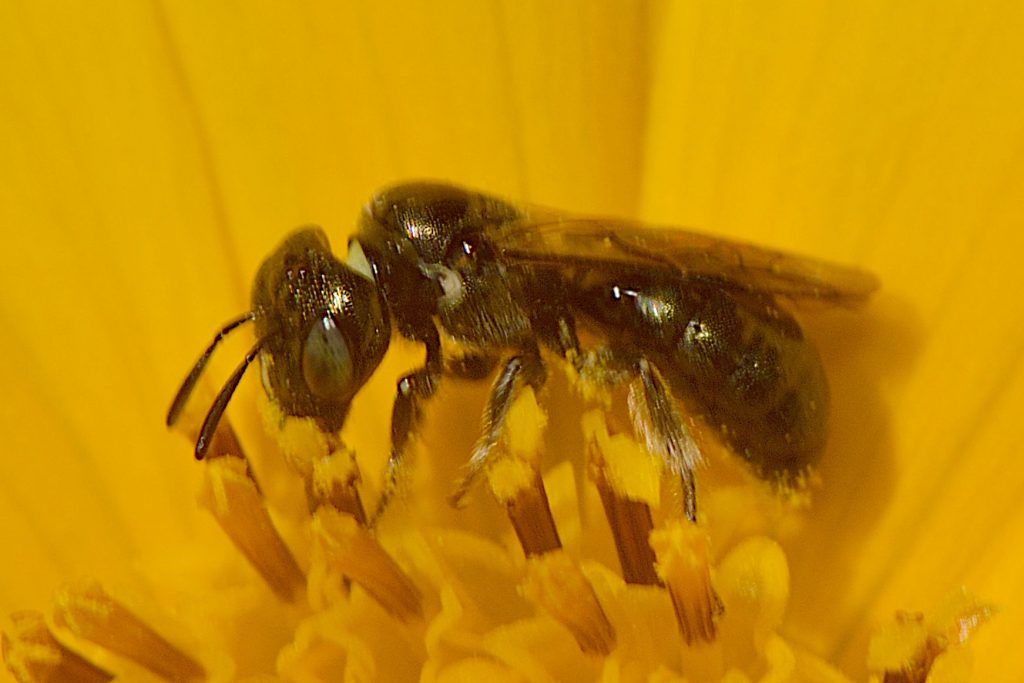
Ceratina (small carpenter bees) – these are dull metallic bees. The abdomen is taller than wide, some call it “clubbed.” This species also often has white marks on its face as can be seen in the above photo. These bees make their nests in the hollow stems of pithy plants.
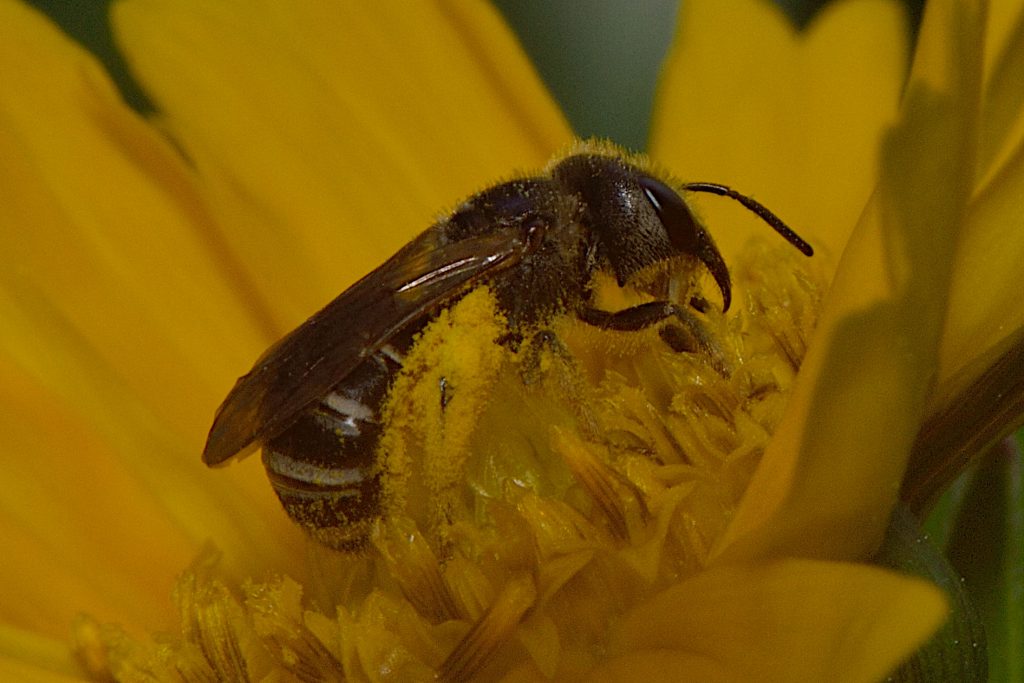
Halictus ligatus (ligated furrow bee) – the head of the female is most distinct. It’s conspicuously large and, in profile, you can see a ventral “tooth” on the side. This one is heavily loaded with pollen.
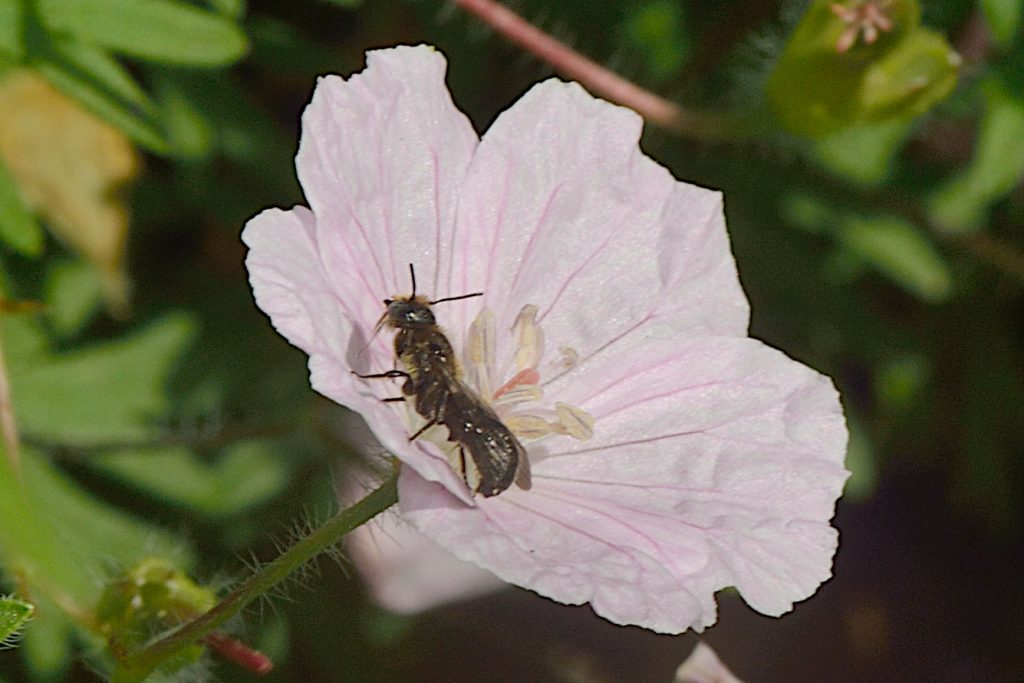
Hoplitis (possibly), a close relative of mason bees – the curved abdomen and baso-ventral protuberance point to this genus.

It was interesting seeing this Hoplitis really go deep into the flower to try to reach nectar. You can also see how pollen sticks to their whole body.
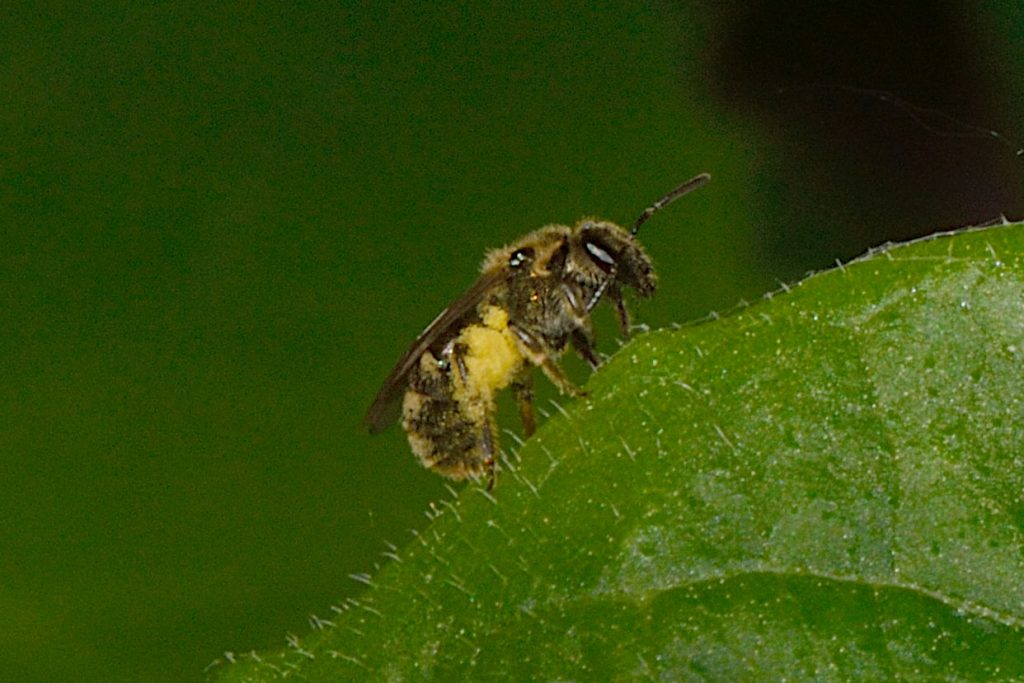
Lasioglossum (Dialictus) (metallic sweat bees) – this subgenus has so many species. If it is a dull metallic-looking sweat bee, it is likely this subgenus.
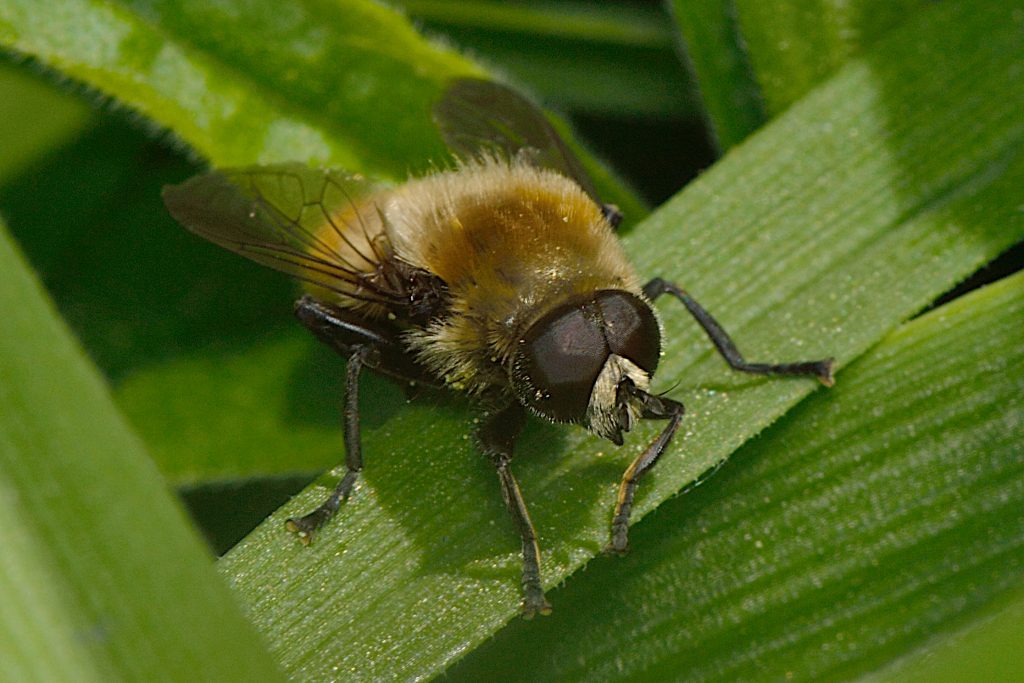
Merodon equestris (narcissus bulb fly, introduced to North America) – a fly with bulb-eating larvae. This species has several different colour variants, some can be more yellow and look more like a bumble bee.
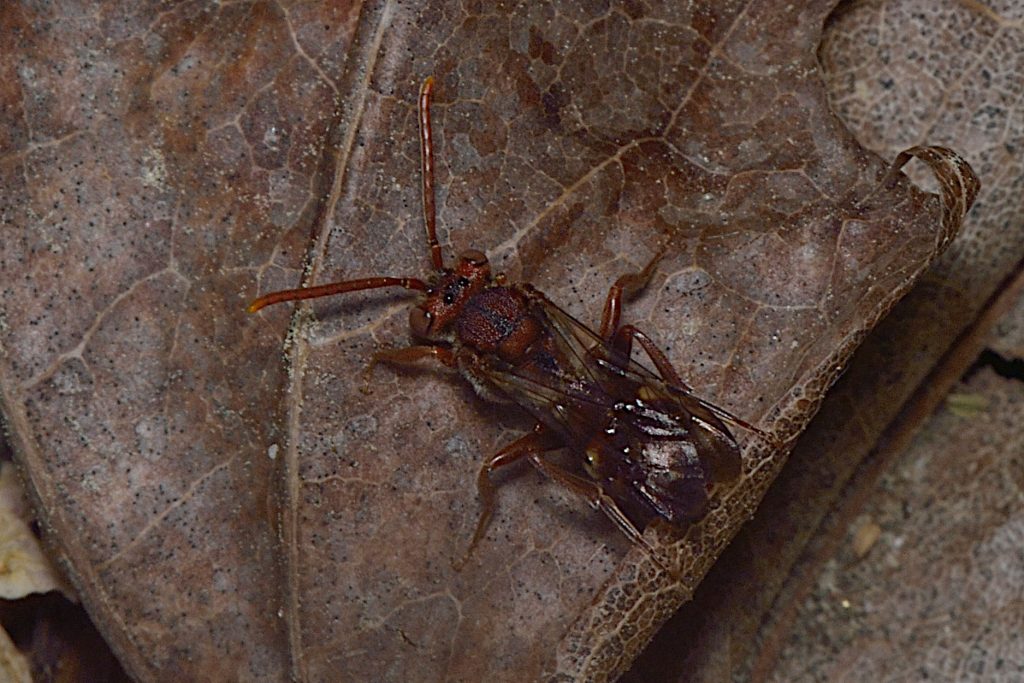
Nomada (nomad bees) – a cool find. These wasp-like bees are cleptoparasites of other bees (including Agapostemon) they are very distinctive with this red, black, and yellow pattern. If you have cleptoparasites around, that means that their hosts must be in good shape – for Nomada to take advantage of.
And an earlier sighting by Christine
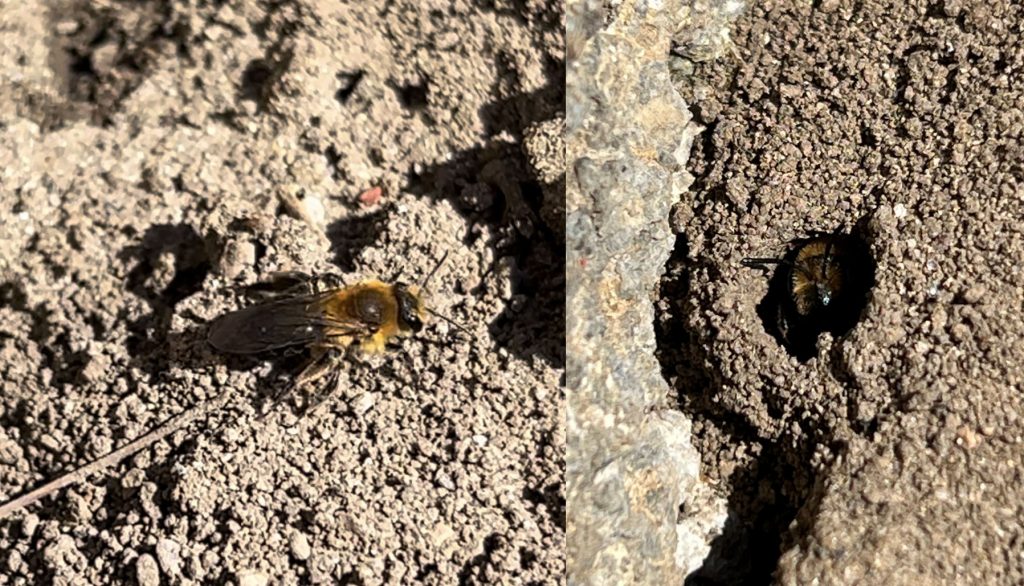
Mining bees, active in mid-April, tunneling in the sandy soil under Christine’s office window. Christine has also made videos of these bees doing the excavation and showing how they sit at the entrance to prevent intrusion. Photos by Christine Edmonds.
